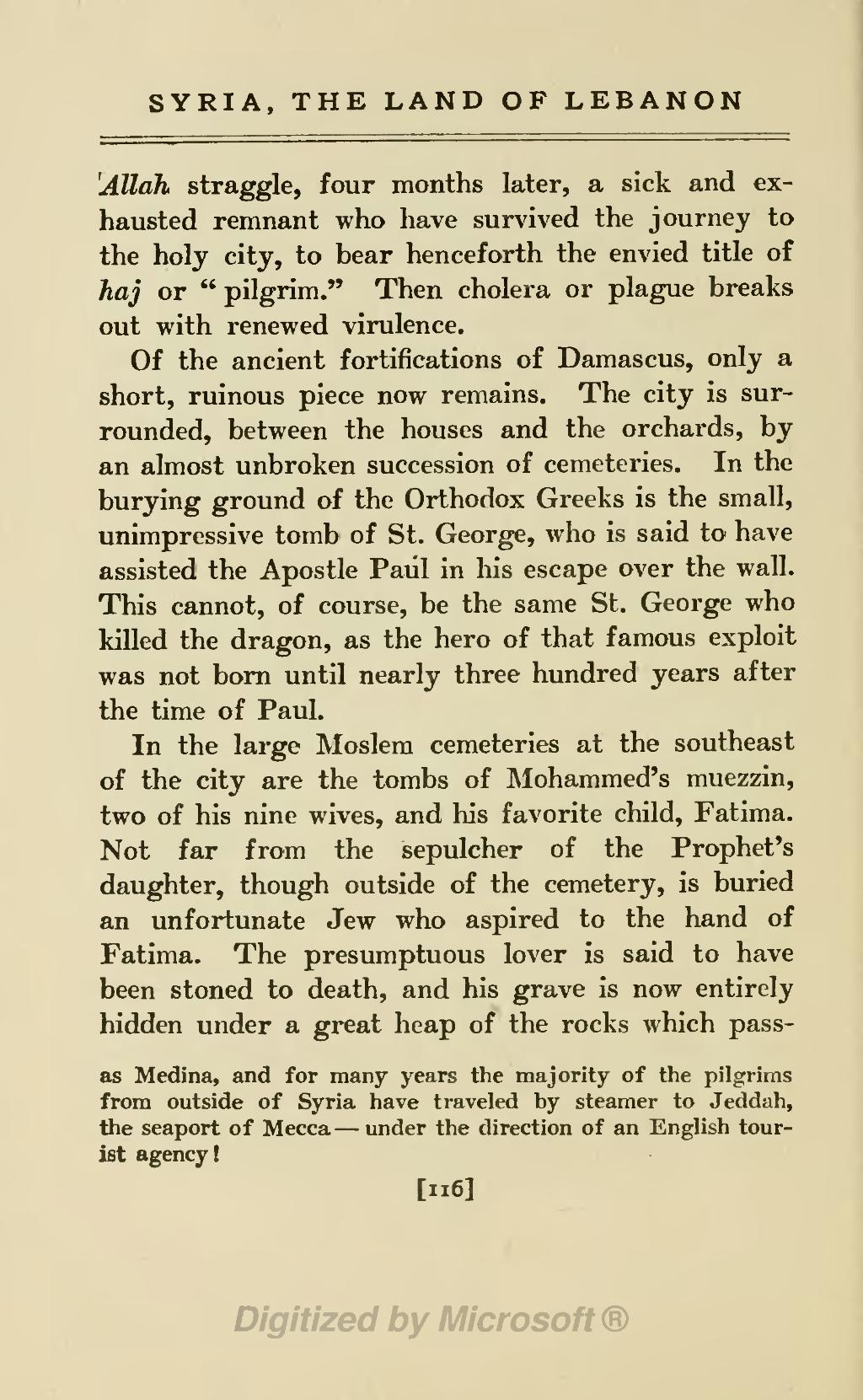SYRIA, THE LAND OF LEBANON
Allah straggle, four months later, a sick and exhausted remnant who have survived the journey to the holy city, to bear henceforth the envied title of haj or " pilgrim." Then cholera or plague breaks out with renewed virulence.
Of the ancient fortifications of Damascus, only a short, ruinous piece now remains. The city is surrounded, between the houses and the orchards, by an almost unbroken succession of cemeteries. In the burying ground of the Orthodox Greeks is the small, unimpressive tomb of St. George, who is said to have assisted the Apostle Paul in his escape over the wall. This cannot, of course, be the same St. George who killed the dragon, as the hero of that famous exploit was not born until nearly three hundred years after the time of Paul.
In the large Moslem cemeteries at the southeast of the city are the tombs of Mohammed's muezzin, two of his nine wives, and his favorite child, Fatima. Not far from the sepulcher of the Prophet's daughter, though outside of the cemetery, is buried an unfortunate Jew who aspired to the hand of Fatima. The presumptuous lover is said to have been stoned to death, and his grave is now entirely hidden under a great heap of the rocks which pass-
as Medina, and for many years the majority of the pilgrims from outside of Syria have traveled by steamer to Jeddah, the seaport of Mecca—under the direction of an English tourist agency!
[ 116 ]
